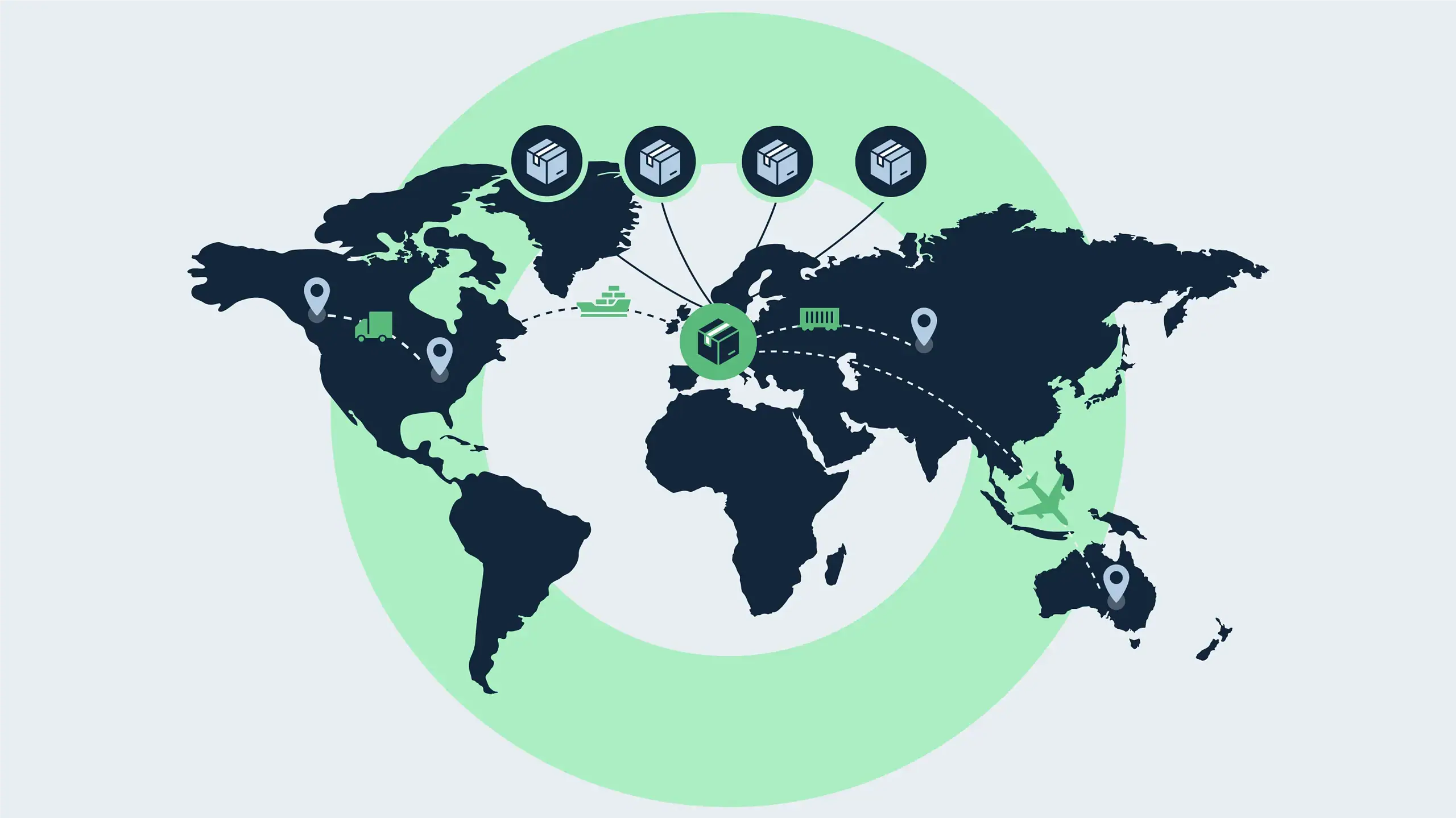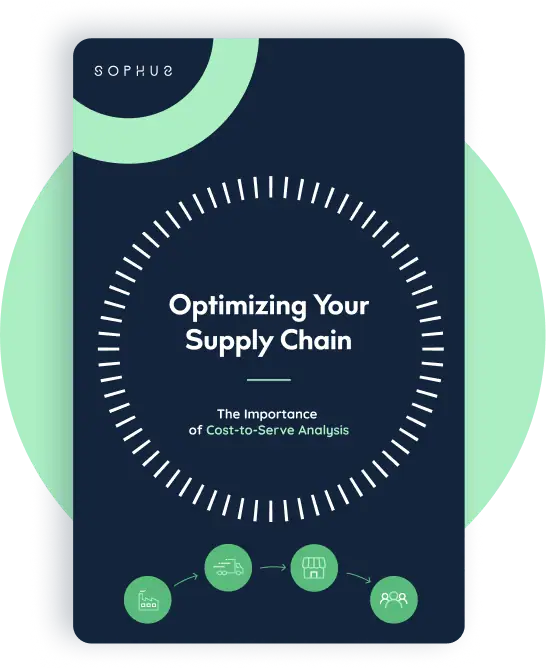Today, businesses rely heavily on efficient supply chains to stay competitive. However, the backbone of any supply chain is transportation, which keeps it efficient. Transportation optimization is the process of making this part of the supply chain as smooth and cost-effective as possible.
Companies can improve delivery times and enhance customer satisfaction by prioritizing transportation optimization.
Transportation optimization means improving the efficiency of a company’s transport operations. It focuses on finding the best routes to reduce delivery times and save costs.
To streamline this process, companies can also use transportation optimization software. These softwares can simplify companies’ transportation processes and help them make smarter decisions.
In this article, we will explore:
Understanding Transportation Optimization
Transportation optimization is improving the efficiency and effectiveness of transport operations within a supply chain. It analyzes multiple factors to ensure that goods are delivered in the best possible way. This can help companies save money and improve their customer satisfaction.
Here are some transportation optimization techniques:
- Route Planning: Route planning or route optimization is about finding the most efficient paths for transporting goods. This includes considering traffic patterns, road conditions, and delivery windows. Better routes can help companies to save time and fuel for reduced costs.
- Load Optimization: Load optimization help to maximize the use of space within transport vehicles. It helps with organization of shipments in a way that minimizes empty space. When trucks or containers are filled, it leads to fewer trips and lower transportation costs.
- Carrier Selection: Choosing a suitable carrier is equally important for good transportation. Different carriers offer various services and pricing. Transportation optimization involves evaluating these options to select the best fit for specific needs. This can help in balancing cost and service quality.
Importance of Transportation Optimization in Supply Chain Management
Transportation optimization can also help with successful supply chain management. It helps businesses respond quickly to changes in demand and reduces delays. When transportation is optimized, companies can achieve better inventory management.
This means they can keep the right amount of stock on hand and reduce excess inventory costs.
Benefits of Transportation Optimization
Transportation optimization offers various benefits that can help successfully run a business supply chain. Here are some key benefits:
1. Cost Reduction
One of the main benefits of transportation optimization is cost reduction. Companies can minimize fuel consumption and reduce the trips needed by optimizing routes and loads. This leads to lower transportation costs.
Moreover, choosing the right carriers can help businesses take advantage of competitive pricing to further cut expenses.
2. Improved Efficiency
Transportation optimization also enhances overall efficiency in the supply chain. It helps to plan better routes, so deliveries can be faster. This means products reach customers more quickly, which is an important aspect of customer satisfaction.
Optimization also helps with efficient load management and ensures that vehicles are used to their full capacity to reduce waste and improve turnaround times.
3. Enhanced Customer Satisfaction
Customers expect timely deliveries and reliable service. Transportation optimization helps meet these expectations. Businesses can boost customer satisfaction by improving delivery times and making sure that products arrive in good condition.
Happy customers are more likely to return and recommend the company to others, which will increase company revenue.
4. Increased Visibility and Control
Transportation optimization also offers better visibility and control over the supply chain. With the help of transportation optimization software, companies can track shipments in real-time.
This will help them monitor progress and resolve problems on time. Increased visibility can also help with informed decisions and respond to changes in demand.
5. Better Inventory Management
Effective transportation optimization contributes to better inventory management. When transportation is reliable, businesses can maintain optimal stock levels.
This reduces the risk of overstocking or running out of products. Better inventory management leads to lower holding costs and improved cash flow.
6. Sustainability Benefits
Sustainability is becoming a growing concern. Transportation optimization can help companies reduce their environmental impact. Businesses can lower their carbon emissions by minimizing the number of trips and optimizing loads.
This benefits the planet and enhances the company’s reputation among environmentally conscious consumers.
Challenges in Transportation Optimization
While transportation optimization brings many benefits, it also comes with its own set of challenges. When businesses are well aware of the challenges, they can take reliable measures to deal with them.
Here are some common challenges faced in transportation optimization:
1. Data Management
Transportation optimization relies on accurate data. Companies need to collect and analyze data related to routes, costs, and delivery times. However, managing this data can be overwhelming.
Many businesses struggle with outdated systems or lack the tools to gather and process information. Without good data, making informed decisions becomes difficult.
2. Resistance to Change
Implementing transportation optimization often requires changes in processes and technology. Employees may resist these changes due to fear of the unknown or a lack of understanding. Management must communicate the benefits of optimization clearly and provide training to help staff adapt to new methods and tools.
3. Technology Integration
Transportation optimization software can greatly enhance efficiency, but integrating new technology into existing systems can be challenging. Companies may face compatibility issues or find it hard to train staff on new software. Careful planning and support are important to make sure transition is smooth.
4. Fluctuating Demand
Supply chains often face unpredictable changes in demand. Seasonal variations, market trends, and unexpected events can all impact transportation needs. This unpredictability can also impact transportation strategies. Businesses must remain flexible and ready to adjust their plans as needed.
5. Regulatory Compliance
Transportation is subject to various regulations. Such as compliance with safety standards and environmental laws. Staying compliant can be complex and time-consuming. Companies should make sure that their transportation optimization strategies align with these regulations.
However, this can sometimes limit their operations.
How Sophus X Can Help?
Sophus X offers powerful solutions for transportation optimization that can benefit businesses. Their tools are designed to enhance efficiency and reduce costs in transportation operations.
Here’s how Sophus X can help:
- Multi-Stop Vehicle Route Optimization: Sophus X specializes in optimizing multi-stop vehicle routes. This means that businesses can plan routes that minimize costs while still meeting delivery constraints. By finding the best paths for vehicles, companies can save money on fuel and time. The global market for transportation route optimization software was valued at USD 3.7 billion and is projected to grow to USD 12.4 billion by 2030.
- Consideration of Key Factors: The Sophus X system considers various important factors such as vehicle type, capacity, range, service time, and costs. This comprehensive approach ensures that the routes planned are cost-effective and practical for the specific vehicles used.
- Cost Reduction: By optimizing routes and improving vehicle utilization, Sophus X helps reduce overall transportation costs. Efficient routing means fewer trips and less fuel consumption, which saves business costs.
- Enhanced Customer Satisfaction: Meeting delivery time windows is crucial for customer satisfaction. Sophus X’s optimization tools ensure that deliveries arrive on time. This reliability builds trust with customers and encourages repeat business.

- Maximizing Vehicle Capacities: Sophus X maximizes vehicle capacities to ensure efficient resource use. Companies can reduce the number of trips needed by fully utilizing the available vehicle space. This not only saves money but also improves overall efficiency.
- Real Road Distance and Time Data: The platform utilizes real road distance and time data for trucks. This means the planned routes are based on actual conditions, leading to more accurate and reliable delivery estimates. Businesses can better plan their operations with this information.
- Accounting for Restricted Zones: Sophus X also accounts for restricted zones based on vehicle type and the relationships between sites, shipments, vehicles, and products. This ensures that routes comply with regulations and avoids potential issues during transportation.
- Environmental Impact Reduction: Sophus X helps businesses reduce their environmental impact by minimizing fuel consumption and emissions through optimized routes. This commitment to sustainability is important as consumers value eco-friendly practices.
Ready to Optimize Your Transportation? Connect with Sophus X Today!
If you want to reduce costs, improve delivery efficiency, and enhance customer satisfaction, it’s time to explore how Sophus X can help. Sophus X offers powerful tools and techniques to optimize transportation routes and streamline supply chains.
Join the ranks of global companies that trust Sophus X to transform their supply chain operations. Don’t wait any longer to enhance your efficiency and sustainability.
Request a demo today and start your journey towards a more optimized and effective supply chain!









